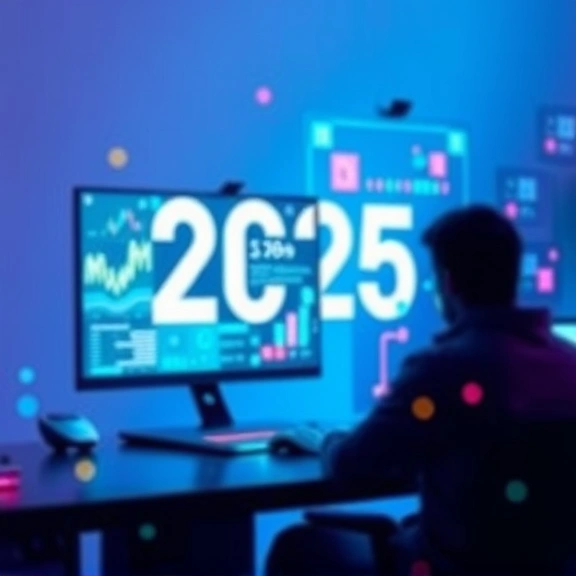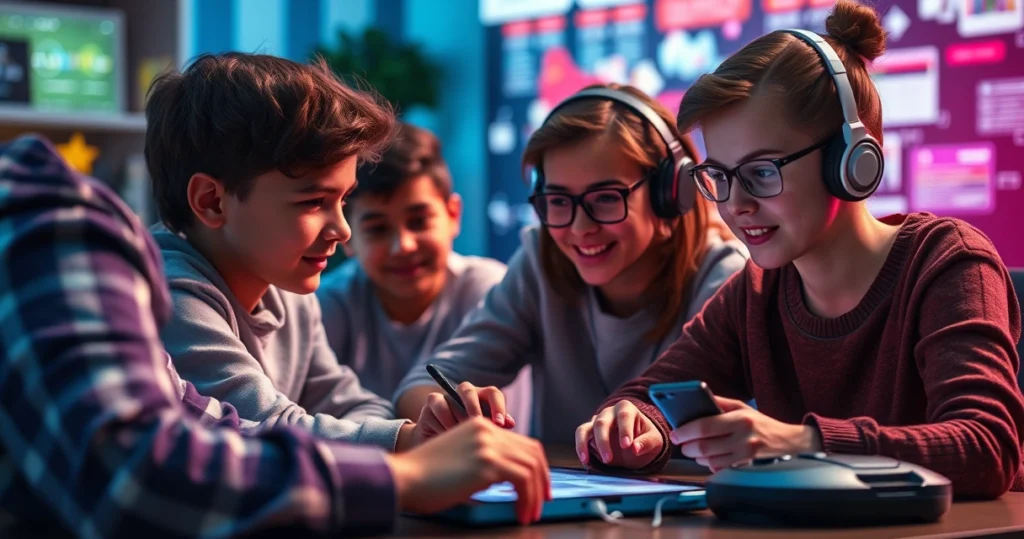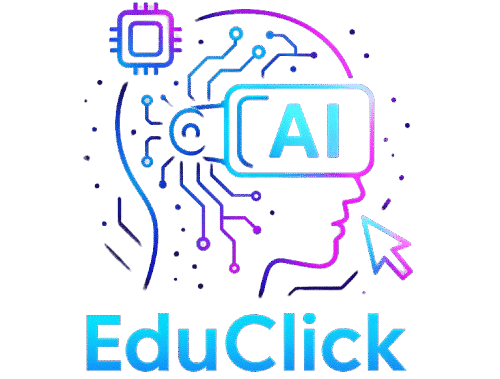The Future of Education: Enhancing Digital Learning Outcomes Through Gamification in 2025
Imagine a world where learning feels less like a chore and more like an exhilarating adventure. Picture yourself, not just watching your child or student, but truly witnessing them engage, enjoy, and excel in their educational journey. As you reflect on your own learning experiences, you might recall textbooks, lectures, and exams. However, in 2025, education is evolving, fueled by the powerful integration of gamification. This shift is not just about high scores or badges but about fundamentally enhancing digital learning outcomes in a world increasingly reliant on technology.

You might have felt the frustration of seeing students struggle to stay motivated in traditional learning environments. The disconnect between rigid educational structures and the vibrant digital world kids thrive in can often lead to disengagement. However, gamification is bridging this gap by transforming the learning environment into one where students are participants, not passive recipients. As we delve into this topic, consider how these changes could impact not just the learners you know but potentially revolutionize education for future generations.
Whether you’re a parent, educator, or someone passionate about the future of education, understanding gamification’s role in digital learning is crucial. This approach is not merely a trend; it’s a pedagogical evolution that aligns with our innate desire for play and challenge. By tapping into these elements, gamification enhances motivation, engagement, and ultimately, educational outcomes. Let’s explore how these gamified experiences are set to redefine learning by 2025, making education more effective and accessible for everyone.
The Science Behind Gamification in Education
Understanding Gamification
Gamification involves applying game-design elements in non-game contexts to enhance user engagement. In education, it means using elements like point scoring, leaderboards, and competition to motivate students. These elements create an environment where learning feels like a game, leading to increased excitement and participation.
The Psychological Impact
Gamification taps into several psychological principles, including motivation, reward, and competition. By using these elements, educators can create a learning environment that encourages persistence and resilience. Studies have shown that gamification increases student motivation by providing immediate feedback and a sense of accomplishment.
Neuroscience and Learning
Neuroscientific research supports gamification by demonstrating how gamified environments stimulate dopamine release, enhancing learning and retention. This biological response is why students often feel more engaged and willing to participate in gamified learning activities.
Practical Applications of Gamification in Digital Learning
Case Studies and Success Stories
Numerous schools and educational platforms have successfully integrated gamification. For example, a case study on Kahoot! shows how the platform’s game-based quizzes have significantly improved student engagement and learning outcomes in classrooms worldwide.
Gamification in Online Learning Platforms
Platforms like Duolingo and Khan Academy use gamification to encourage consistent practice and mastery. By offering rewards, streaks, and competitive elements, these platforms keep learners motivated over long periods.
Blending Gamification with Traditional Methods
While digital learning benefits enormously from gamification, blending it with traditional teaching methods can further enhance learning outcomes. For instance, a project-based learning approach can incorporate gamified elements to create a hybrid learning experience that caters to diverse learning styles.
🎥 Vídeo complementar sobre o tópico
Designing Effective Gamification Strategies
Identifying Learning Objectives
Before implementing gamification, it’s crucial to identify clear learning objectives. This ensures that the game elements align with educational goals, leading to meaningful learning experiences rather than mere entertainment.
Choosing the Right Game Mechanics
Not all game mechanics are suitable for every learning context. Educators need to select mechanics that best fit the subject matter and the learners’ needs. For instance, while leaderboards may motivate some students, others might benefit from cooperative challenges or narrative-driven quests.
Iterative Development and Feedback
Developing a successful gamified learning experience requires constant iteration and feedback. By involving students in the development process, educators can refine the game elements to better suit the learners’ preferences and needs, ensuring sustained engagement and improved outcomes.
Challenges and Considerations in Implementing Gamification
Avoiding Over-Competition
While competition can be motivating, excessive focus on winning can lead to stress and disengagement. Balancing competitive elements with collaborative challenges can create a more inclusive environment that caters to all learners.
Maintaining Educational Value
One of the biggest challenges in gamification is ensuring that the educational content remains the focus. It’s essential to design games where learning is seamlessly integrated into gameplay, preventing it from being overshadowed by the game mechanics.
Addressing Different Learning Styles
- Recognize that every student has a unique learning style
- Incorporate various game elements to appeal to diverse preferences
- Allow students to choose their path or role within the gamified environment
The Future of Education: Gamification in 2025
Technological Advancements
By 2025, technological advancements will play a pivotal role in enhancing gamified digital learning. Virtual reality (VR) and augmented reality (AR) will create immersive environments where students can explore and interact with content in unprecedented ways.
Gamification and Global Education
Gamification has the potential to break down geographical barriers, offering equal learning opportunities to students worldwide. With internet access becoming more widespread, even remote or underserved areas can benefit from gamified learning platforms.
Personalized Learning Experiences
Future gamified learning platforms will leverage data analytics to provide personalized learning experiences. By tracking progress and preferences, these platforms can tailor content to meet individual needs, enhancing overall learning outcomes.

What is gamification in education?
Gamification in education involves incorporating game-like elements such as point scoring, leaderboards, and challenges into the educational process. This approach aims to increase student motivation and engagement by making learning more interactive and enjoyable.
How does gamification improve learning outcomes?
Gamification improves learning outcomes by enhancing student motivation and engagement. Game elements provide immediate feedback, create a sense of accomplishment, and encourage regular participation, all of which contribute to improved knowledge retention and application.
Can gamification be applied to all subjects?
Yes, gamification can be applied across a wide range of subjects. However, the key is to tailor the game elements to fit the specific content and learning objectives of each subject, ensuring that the gamified experience remains educationally relevant.
What are some examples of gamification in education?
Examples of gamification in education include platforms like Duolingo, which uses streaks and rewards to motivate language learners, and Kahoot!, which offers game-based quizzes to enhance classroom engagement. These platforms have successfully integrated game mechanics to improve learning outcomes.
Are there any drawbacks to gamification in education?
While gamification offers many benefits, it also has potential drawbacks. Excessive competition can lead to stress, and if not carefully designed, the educational content may become secondary to the game elements. It’s crucial to strike a balance to ensure the focus remains on learning.
How can educators balance gamification with traditional teaching methods?
Educators can balance gamification with traditional methods by integrating game elements that complement existing teaching strategies. For example, using gamified quizzes to reinforce content taught in lectures or combining project-based learning with gamified challenges can enhance overall educational effectiveness.
What technologies are driving gamification in education?
Technologies such as virtual reality (VR), augmented reality (AR), and data analytics are significant drivers of gamification in education. These technologies create more immersive and personalized learning experiences, allowing students to engage deeply with the content.
How does gamification address different learning styles?
Gamification addresses different learning styles by offering a variety of game elements that cater to diverse preferences. Visual learners may benefit from graphic-rich interfaces, while kinesthetic learners could engage more with interactive simulations. Providing options ensures all learning styles are accommodated.
Conclusion: Embracing Gamification for a Brighter Educational Future
As we look towards 2025, the role of gamification in education becomes increasingly clear. By making learning more engaging and personalized, gamification has the potential to transform digital learning outcomes, paving the way for a future where every student has the opportunity to succeed. By embracing these innovative strategies, educators and parents alike can foster an environment where learning is not only effective but also enjoyable.
You’re invited to consider how you can incorporate gamification into your own educational practices. Whether you’re a teacher, parent, or learner, exploring gamified solutions can provide a fresh perspective on education. This approach ensures that students remain motivated and invested in their learning journey, leading to better outcomes and a deeper understanding of the material.
Incorporating gamification into education is more than a strategy; it’s a movement towards a more dynamic and inclusive learning environment. By adopting these methods, you’re not only enhancing the educational experience for students today but also setting the foundation for future generations to learn in ways that are engaging, effective, and tailored to their individual needs.
Key Takeaways
- Gamification enhances digital learning outcomes by increasing student motivation and engagement.
- Successful gamification requires aligning game elements with educational objectives.
- Technological advancements like VR and AR are transforming gamified learning environments.
- Balancing gamification with traditional methods can optimize educational effectiveness.
- Gamification offers unique opportunities to personalize learning experiences and address diverse learning styles.




